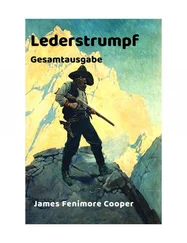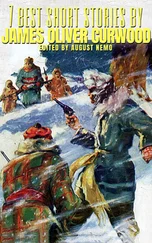On the floor beneath the bed was a rifle case, placed there three weeks earlier—a Heckler & Koch PSG1 with a custom-made 50x telescopic site thermal infrared scope.
There was only one path to the cottage, and only one door. Five windows. They would try to come at him through the woods, although first they would probably access the property from the gravel road. However they came onsite, they would have to trip one of the infrared sensors, which were placed all along the perimeter.
He had stocked the refrigerator and brought along warm clothes. Unlike most people, Charles Mallory could remain focused on a single object for hours at a time when he needed to. It wasn’t something that just came to him. He had trained for this.
Charlie waited through the remainder of the first day, sitting on an armchair across from the opened window, watching the woods for any changes in scenery, imagining what they were doing, the strategies they had considered and rejected. Listening for the distant sound of an engine or of gravel under wheels. Becoming attuned to the natural sounds of the outdoors—wind stirring the leaves, the footsteps of squirrels on tree bark, bird wings flapping—so he would know when a sound wasn’t natural.
Several times, he thought of Anna, and what they would do when “this business” was over. The clarity of her dark, reassuring eyes. He thought of the places they would go. It was his way of detaching from the work, taking a break.
He slept for no longer than an hour at a time the first night, wrapping himself in blankets against the cold. But nothing came through the woods overnight. He woke to the cool glare of the sun rising in the trees across the dewy forest floor and listened—heard the creaking of branches in the wind, the fluttering sound of falling leaves. Nothing else.
He ate a breakfast of fruit, granola bars, and coffee, staying close to the monitor. Sitting in the chair and watching the woods. Thinking about Anna. Waiting.
It was 5:23 that afternoon when the first alarm sounded. Mallory checked the monitor. Something or someone had entered the property from the east side of the gravel road about three-quarters of a mile away. It was picked up again forty-five seconds later, moving closer. And then once more. A trajectory suggesting to him that it was someone walking toward a specific target.
Then came a second breach, about a hundred yards to the northwest. A second subject. They were on the property now. Two of them.
Charlie Mallory lifted the weapon out of the gun case. The scope was special-operations military grade, capable of changing from a day scope to a night scope when necessary. But he wasn’t going to need the thermal night scope, not yet. He slid the mounting rail into the top of the rifle and switched it on. Put his right eye in the eyecup. Placed the gun’s mounted bipod on the table top across from the open window and settled in the wooden folding chair beside it. The scope was 50x magnification, higher than any telescopic lens that was commercially available.
HAVING TWO TARGETS made it more difficult. Probably, they would stake out the cottage from a distance first, using their gun sights. Charlie had already determined the approximate spots in the woods that would give them the best views of the windows and door.
He slowly scoured the woods through his gun scope, aiming in the directions where the scanners had been tripped, following the likely trajectories. Twice, he saw motion. The first was a deer, walking over a rise. Charles Mallory saw it stop and turn, hyper-alert, and then dart away.
The second movement he spotted was not a deer.
He followed the subject through the scope of his rifle, dialing in a clearer focus: an agile, medium-sized man, wearing a camouflage jacket and pants. Moving stealthily among the trees, carrying what looked to be a Russian 12.7mm rifle. A man nearly as alert and focused as he was. Climbing in a crouch over a small rise in the forest floor, then ducking down behind a fallen tree.
Charlie twisted the scope, adjusting the magnification until the predator’s features were sharp, in the center of the illuminated floating reticles. So sharp that he could see the pores in his dark skin, a hook-shaped scar on one cheek. But it wasn’t Il Macellaio . No, this must be the partner. Someone he didn’t know.
He turned his scope away, quickly scanning the woods behind him and then in front with his eyes. Left to right. Realizing that this man might just be a decoy. Where was Hassan?
But he saw nothing.
Or maybe this was only an orientation. Getting a feel for the set-up.
Again, the high-pitched tweet of the alarm sounded. The other man was somewhere behind the cottage now—a vantage point Charlie couldn’t see—and coming closer. Charles Mallory felt a kick of adrenaline. He walked to the back bedroom and planted the rifle’s bipod on a table, several feet from the window. The woods were thicker in back, and he scanned them in the direction of the tripped sensor. Right to left. Up and down. Saw the details of the tree bark, the veins in fallen leaves. But nothing human. Il Macellaio was too far away to see yet, or else hidden among the trees.
He moved in a crouch back to the front room. The other man was coming closer, close enough to see Charles Mallory, probably, and to take him out if Mallory made a mistake. He shuffled to the corner of the right front window. Found him again in his scope. Watched as he crawled through the brush to a spot on a rise and then lay flat in the leaves, barely visible. Something, he saw, was strapped to his back. A second rifle? Charlie ducked away from the window as the predator lifted his scope, aiming at the window.
Charles Mallory crawled to the back room. Looked through the rifle scope at the thick rolling forestland behind the house. Listening to the breeze. At first, he didn’t see anything, scanning the woods meticulously. Then, finally, he found him: a blur among the trees.
Il Macellaio would come in later, Charlie sensed, after the first blow had been delivered. The other man was his front line. Unless they were planning to try to overpower him, coming at the house from two directions. But that wouldn’t be smart, because he had a surveillance advantage. He could see them coming better than they could see him. Mallory returned to the front room. Found the other man through his scope, lying on a leafy patch of earth among the beeches and pines. He watched the man raise his weapon again, aim it toward the cabin. Mallory ducked away from the window, but not before recognizing what was strapped to the man’s back. It was a second gun. The one in his hands was a Russian-made sniper rifle. The other was something else entirely: a twelve-gauge, pump-action shotgun. What looked like a Mossberg 500. Why would he use a pump-action shotgun for a sniper mission? Then he realized: It wasn’t for a sniper mission. The other weapon was a riot gun. He was preparing to shoot rounds of tear gas into the house through the windows. That was their tactic. Mallory would be forced out the front door, and as soon as he was visible, the predator would cut him down, probably with a body shot.
It was actually a pretty good plan, although Charles Mallory had prepared for it. He had a tear gas mask beside the surveillance monitor. But he wasn’t planning on using it. His plan was that it wouldn’t be necessary.
Charlie watched as the man moved closer—shuffling quickly for a few yards then flattening himself once again, in a pocket of fallen branches and shrubs and under-growth. Mallory scrambled to the other front window. Saw him lift the sniper rifle again, aim it toward the cabin. Lower it. He watched whenever the man moved, and he ducked from sight when he raised his gun.
Читать дальше












